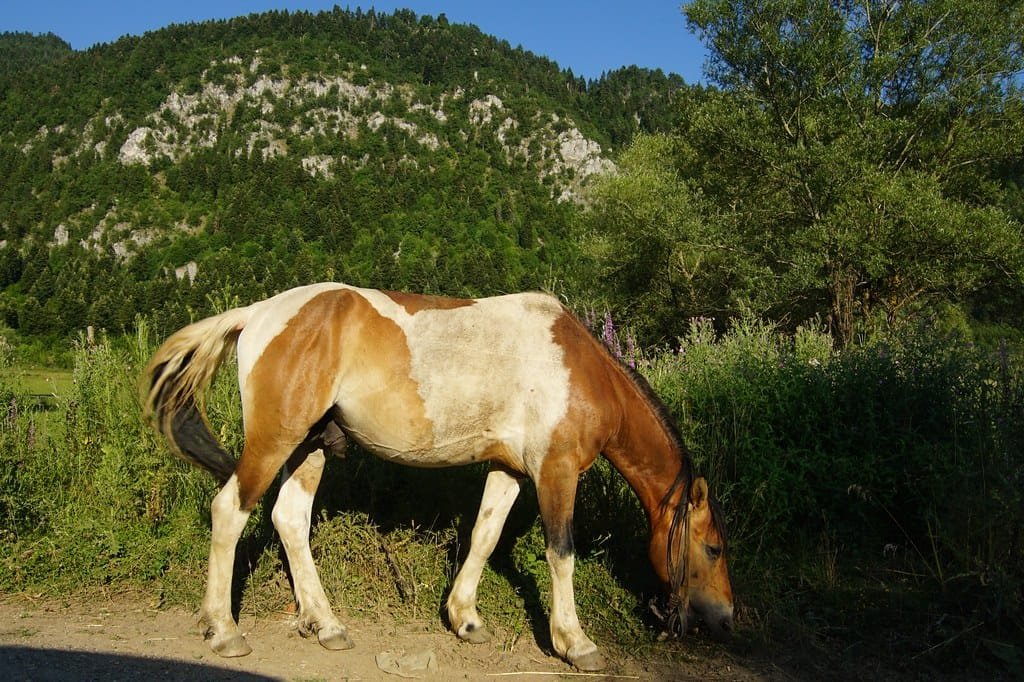Albanian horse breed’s history can be traced back to ancient times when horses were crucial for transportation, agriculture, and warfare.
The harsh terrain of Albania, with its rugged mountains and rocky paths, played a significant role in shaping the characteristics of these horses In ancient times, horses were essential for many aspects of life. The Albanians, like many other ancient peoples, used horses for travel and as a vital part of their agricultural activities. Historical records suggest that horses have been a part of Albanian life since at least the Roman era, but they were likely important even earlier.
Feature details
| Feature | Description |
|---|---|
| Size | Typically 13.2 to 14.2 hands high. Adjust the size based on the scale of your model. |
| Build | Sturdy with a strong, muscular body and a short, powerful neck. Ensure the frame reflects these traits. |
| Coat Color | Colors range from chestnut to brown. Use fabric or faux fur in these colors to replicate the natural coat. |
| Temperament | While the model won’t display temperament, design it with a calm and hardworking appearance. |
| Frame Material | Lightweight yet sturdy materials like wood or metal for internal support. |
| Exterior Material | Fabric, faux fur, or molded plastic. Paint or dye fabric for accurate coat colors. |
| Filling Material | Foam or polyester for shaping and texture. |
| Mane and Tail | Yarn or synthetic hair for realistic mane and tail. Attach securely. |
| Legs | Rigid materials or jointed design for stability. Ensure legs can support the model’s weight. |
| Eyes | Small, rounded materials or painted details for lifelike eyes. |
| Hooves | Black paint or different material to mimic real hooves. |
| Painting | Base coat followed by detailed painting for markings and patterns. |
| Texturing | Add highlights and shadows for a three-dimensional appearance. |
| Stability Testing | Check the model’s stability and make adjustments as needed to ensure it stands properly. |
| Display | Choose a prominent spot for display or use it in educational contexts with additional information. |
Historical Background
The Albanian horse has been an integral part of life in Albania for centuries. Historically, these horses were used for a variety of tasks. They were essential for agriculture, helping with plowing fields and transporting goods. In addition, they served as reliable mounts for travel and transportation across the challenging landscapes of Albania. Their adaptability and endurance made them invaluable to the people living in mountainous and often remote areas.
Temperament and Behavior
Albanian horses are known for their calm and willing nature. They are generally good-natured and cooperative, which makes them suitable for both experienced riders and beginners. Their intelligence and eagerness to work contribute to their effectiveness in various roles. These horses have a strong bond with their owners and are often described as loyal and hardworking.
Modern Uses
In recent years, there has been a renewed interest in the Albanian horse, both within Albania and internationally. Efforts are being made to preserve and improve the breed, recognizing its historical significance and potential in modern equestrian activities. The breed is now appreciated for its qualities in competitive disciplines such as show jumping, dressage, and endurance riding.
Preservation and Future
Preserving the Albanian horse breed is important for maintaining the cultural heritage of Albania. Various organizations and enthusiasts are working to ensure that this breed continues to thrive. By promoting breeding programs and raising awareness about the breed’s unique characteristics, there is hope that the Albanian horse will remain a vital part of Albania’s equestrian tradition.
the Albanian horse is a breed with a rich history and a bright future. Its strength, endurance, and gentle temperament make it a versatile and valuable animal, not only for historical purposes but also for modern equestrian sports. As efforts to preserve and promote this breed continue, the Albanian horse is set to remain a cherished symbol of Albania’s equestrian heritage.





